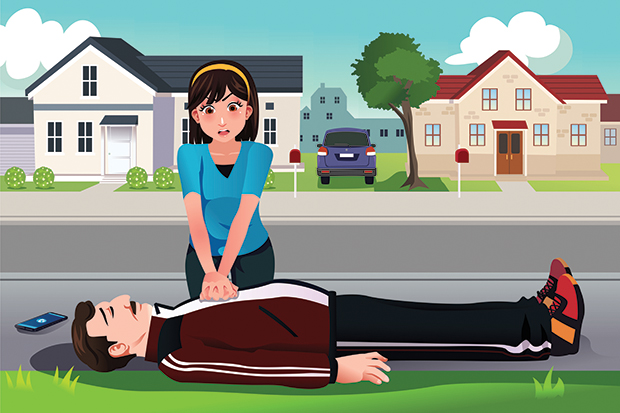
By American Heart Association News
Only half of Americans can be counted on to perform CPR in an emergency, a new survey finds.
Even more – 61 percent – worry they could unintentionally injure the victim. It’s a concern highest among minorities: 70 percent of African Americans, 67 percent of Asians, and 64 percent of Hispanics think they could injure the person, compared with 59 percent of Caucasians. Hispanics are also more likely than Caucasians to believe special training and certification are required to perform Hands-Only CPR.
The 2016 online survey of nearly 1,200 adults was commissioned by the American Heart Association. The Hands-Only CPR survey has been conducted since 2009.
Longtime CPR instructor Gustavo E. Flores, M.D., said the findings didn’t surprise him because he’s heard the same concerns and comments from students. He wants people to know the benefits of CPR greatly outweigh the risk of injury.
“Your patient in front of you is going through the worst thing that somebody could endure – no signs of life,” said Flores, director and chief instructor at Emergency & Critical Care Trainings in San Juan, Puerto Rico. “If your patient is in… sudden cardiac arrest, there’s nothing you can do that can make him worse.”
Each year in the United States, more than 350,000 cardiac arrests occur outside a hospital, and only about 11 percent of those treated by emergency medical services survive, according to AHA statistics. CPR can double or triple a person’s chance of survival, especially if performed within the first few minutes of cardiac arrest.
Flores’ father also taught CPR, and as a child he’d often accompany his father to classes. Two decades ago, the hurdle was coming up with safe and effective techniques to pass on to the general public, Flores said. But despite today’s simple technique of pushing hard and fast in the center of the chest, the misconception remains that specialized training is needed, he said.
“It is safe to do Hands-Only CPR,” Flores said. “All you need is two hands.” Emergency medical services training coordinator Sean Culliney teaches CPR in Tucson, Arizona. “Far more damage comes from doing nothing,” said the paramedic from the Northwest Fire District.
Culliney said the survey shows the CPR community needs to do a better job of spreading the message in minority communities in urban areas.
The survey also showed 13 percent of respondents said they had recently been in a situation where they could’ve performed CPR but didn’t. That’s up from four percent in the 2014 survey.
In addition, 90 percent of respondents support making CPR training mandatory for high schoolers, and 89 percent know to first call 911 if someone is in cardiac arrest, up from 86 percent in the 2014 survey.
Through the AHA’s Hands-Only CPR campaign supported by the Anthem Foundation, nearly 6.4 million people have been trained in Hands-Only CPR since 2015 through video education, events and training kiosks.

